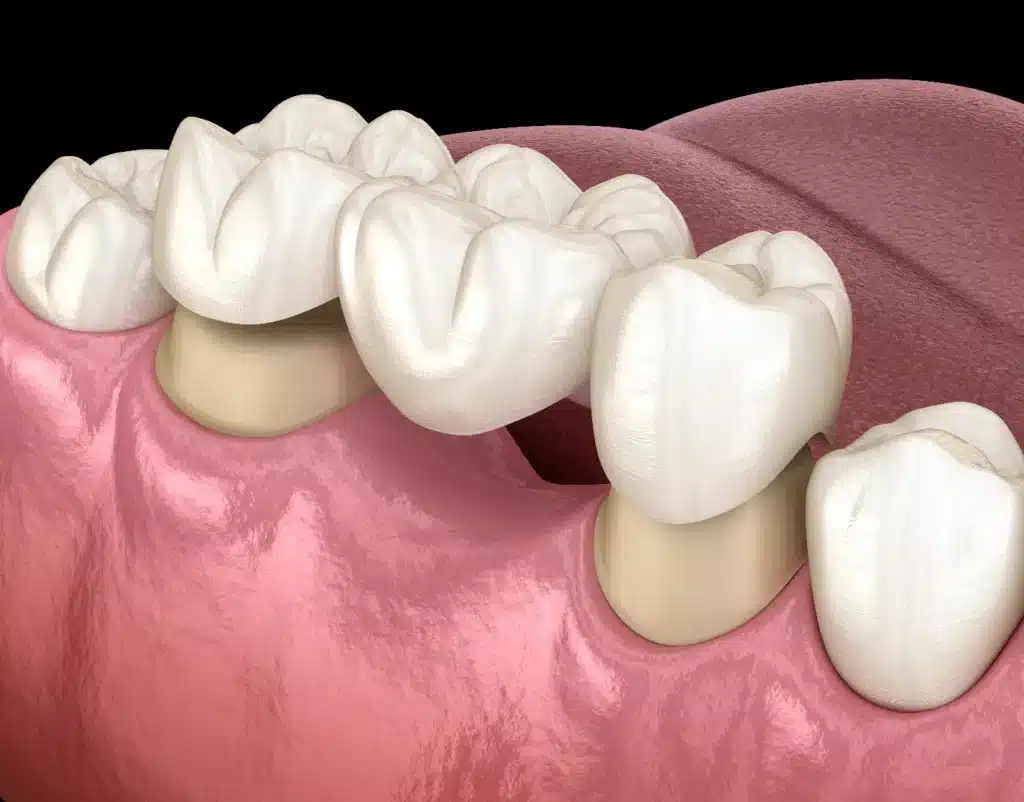What are Dental Bridges?
A dental bridge is a dental restoration appliance used to replace one or more missing teeth. It’s also a treatment option for a severely decayed tooth that can’t support a crown.
There are four types of dental bridges: traditional, implant-supported, resin-bonded, and cantilever. A traditional bridge consists of an artificial tooth fused between two crowns. The appropriate treatment will depend on the location of the gap in your mouth and the condition of the surrounding teeth and gums.
What are the Benefits of a Dental Bridge?
Dental bridges have a variety of functional and esthetic advantages. A dental bridge will improve your ability to bite down evenly and chew properly. It can also correct speech and pronunciation impediments caused by missing teeth.
In most cases, the material used to create a dental bridge will match your natural teeth and be imperceptible to the naked eye. In addition to restoring your smile, the treatment will prevent your other teeth from shifting.
What’s Involved in Getting a Dental Bridge?
Unless you need dental implants, which require a separate surgery, a dental bridge procedure takes two appointments to complete.
During the first appointment, your dentist will file down the adjacent teeth to prepare them for the crowns. Your dentist will then take a dental impression or scan of your teeth to create a model. This model will be used to design a custom bridge. In the meantime, your dentist will install a temporary bridge to protect your exposed gums and teeth.
During the next appointment, your dentist will replace the temporary bridge with the permanent one. After ensuring a seamless fit, your dentist will secure the crowns to your healthy teeth or implants
How do I Clean my Dental Bridge?
A dental bridge should last about 10 years if you maintain your oral health. Unlike dentures, you don’t remove a dental bridge to clean it. Simply use a floss threader to clean beneath the artificial tooth. Continue to brush your teeth twice daily and make regular dental cleanings part of your oral hygiene routine.
Sign up for appointment
It just takes a few minutes to book a visit online.



